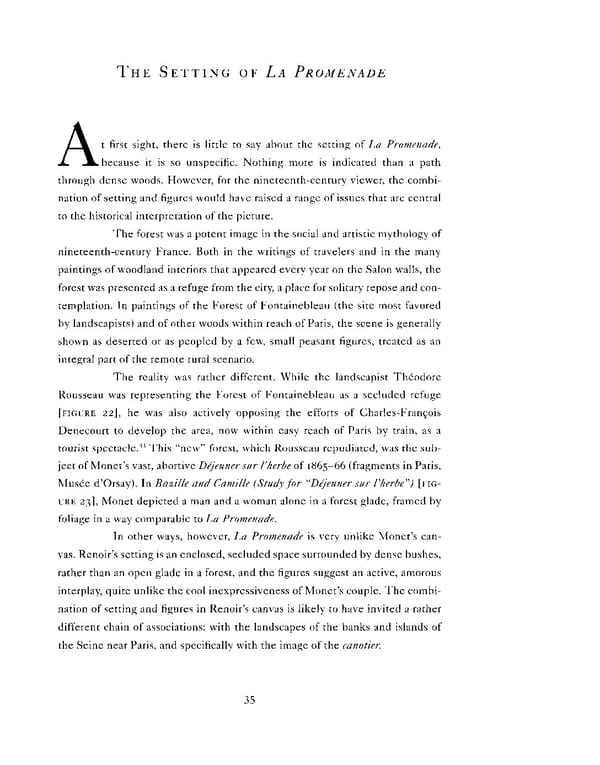THE SETTING OF LA PROMENADE At first sight, there is little to say about the setting of La Promenade, •because it is so unspecific. Nothing more is indicated than a path through dense woods. However, for the nineteenth-century viewer, the combi- nation of setting and figures would have raised a range of issues that are central to the historical interpretation of the picture. The forest was a potent image in the social and artistic mythology of nineteenth-century France. Both in the writings of travelers and in the many paintings of woodland interiors that appeared every year on the Salon walls, the forest was presented as a refuge from the city, a place for solitary repose and con- templation. In paintings of the Forest of Fontainebleau (the site most favored by landscapists) and of other woods within reach of Paris, the scene is generally shown as deserted or as peopled by a few, small peasant figures, treated as an integral part of the remote rural scenario. The reality was rather different. While the landscapist Theodore Rousseau was representing the Forest of Fontainebleau as a secluded refuge [FIGURE 22], he was also actively opposing the efforts of Charles-Francis Denecourt to develop the area, now within easy reach of Paris by train, as a 44 tourist spectacle. This "new" forest, which Rousseau repudiated, was the sub- ject of Monet's vast, abortive Dejeuner sur rherbe of 1865-66 (fragments in Paris, Musee d'Orsay). In Bazille and Camille (Study for "Dejeuner sur rherbe") [FIG- URE 23], Monet depicted a man and a woman alone in a forest glade, framed by foliage in a way comparable to La Promenade. In other ways, however, La Promenade is very unlike Monet's can- vas. Renoir's setting is an enclosed, secluded space surrounded by dense bushes, rather than an open glade in a forest, and the figures suggest an active, amorous interplay, quite unlike the cool inexpressiveness of Monet's couple. The combi- nation of setting and figures in Renoir's canvas is likely to have invited a rather different chain of associations: with the landscapes of the banks and islands of the Seine near Paris, and specifically with the image of the canotier. 35
 Pierre-Auguste Renoir: La Promenade Page 42 Page 44
Pierre-Auguste Renoir: La Promenade Page 42 Page 44